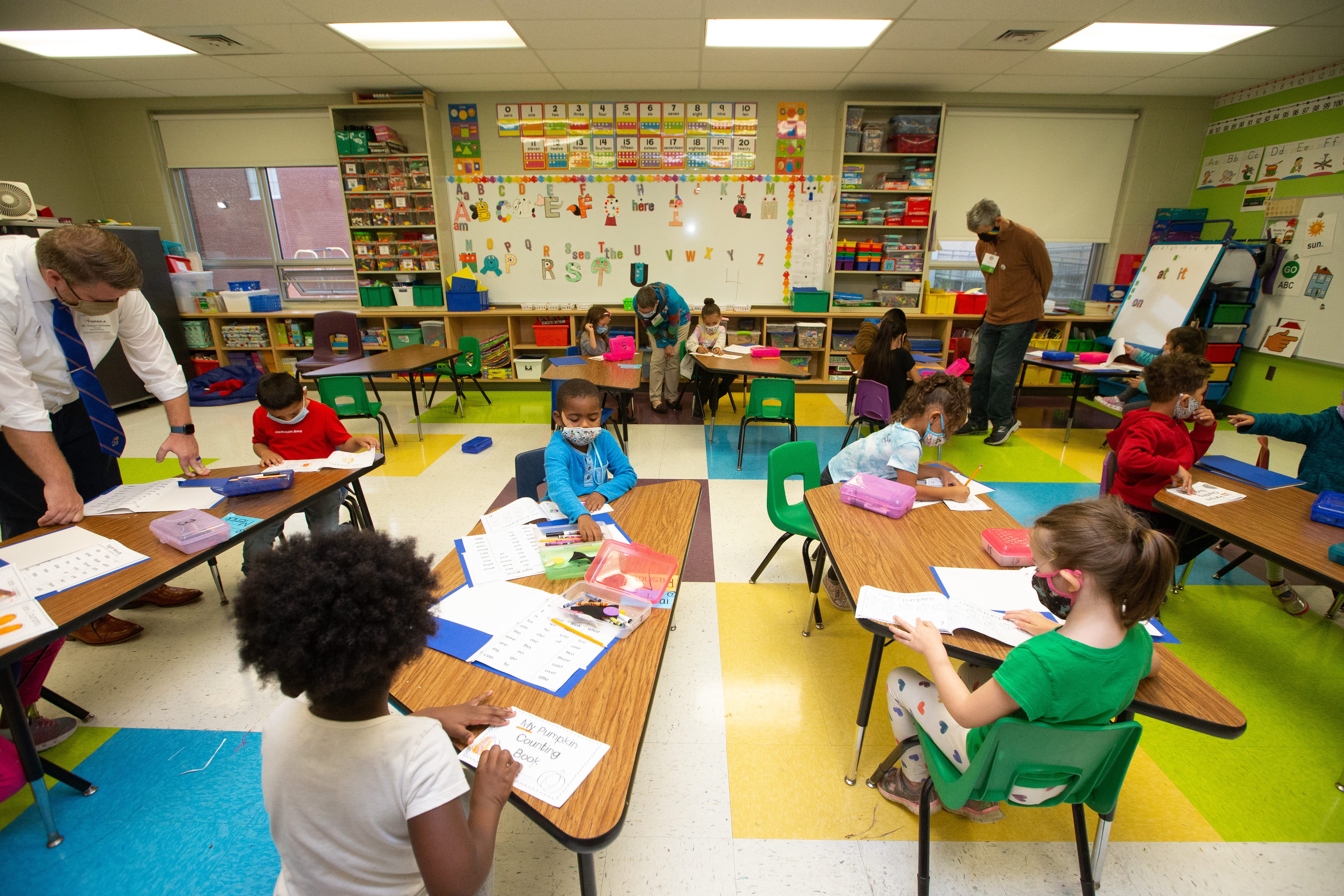Boost Your Child’s Confidence with Primary Science Tuition Singapore
Boost Your Child’s Confidence with Primary Science Tuition Singapore
Blog Article
A Comprehensive Overview to the Different Knowing Methods in Main Scientific Research Direction
The exploration of varied understanding techniques in primary scientific research direction presents an opportunity for educators to improve trainee engagement and understanding substantially. By taking a look at hands-on knowing techniques, inquiry-based approaches, and joint techniques, we can recognize efficient techniques that cater to various discovering styles. In addition, the combination of modern technology and separated guideline plays a critical function in cultivating an inclusive atmosphere. However, the concern continues to be: exactly how can these approaches be effectively carried out in the class to optimize their impact? The solution depends on a better examination of each approach and its implications for mentor scientific research.

Hands-On Learning Techniques
Hands-on discovering methods play a crucial role in primary science guideline, involving pupils in energetic exploration and experimentation. These methods allow learners to interact directly with phenomena and materials, promoting a deeper understanding of scientific concepts. By using manipulatives, models, and real-life experiments, instructors produce an atmosphere where trainees can observe, hypothesize, and evaluate their ideas.
Such techniques not just boost comprehension however likewise cultivate vital thinking and problem-solving abilities. When pupils take part in tasks like building easy equipments, planting seeds, or conducting chemical reactions, they are urged to ask questions and look for answers through their very own monitorings. This experiential strategy assists to demystify complicated scientific concepts, making them extra relatable and obtainable.
In addition, hands-on discovering promotes collaboration amongst peers, as trainees frequently operate in teams to conduct experiments or share searchings for. This teamwork not just enriches their knowing experience but additionally develops crucial social skills. Ultimately, incorporating hands-on techniques in main scientific research guideline promotes a lifelong love of discovering and curiosity regarding the all-natural world, laying a solid foundation for future academic pursuits in science and past.
Inquiry-Based Knowing
Inquiry-based understanding is an instructional technique that encourages trainees to ask inquiries, investigate sensations, and construct their own understanding of clinical principles. This method moves the emphasis from traditional teacher-led direction to an extra student-centered experience, where students take the campaign in their academic trip. By cultivating curiosity, inquiry-based knowing advertises much deeper involvement with the material, enabling pupils to discover topics in a significant context.
In method, this strategy often includes hands-on experiments, observations, and important thinking activities that line up carefully with the scientific technique. Trainees are motivated to create theories, layout investigations, and evaluate data, which cultivates vital skills such as analytical and analytical reasoning. The function of the instructor in this framework is to promote expedition, leading pupils via the query process while encouraging independent thought and cooperation.
In addition, inquiry-based understanding supports a sense of ownership over the learning procedure, inspiring students to go after knowledge actively. This technique not just enhances understanding of scientific ideas but additionally promotes a lifelong love for learning, equipping pupils with the skills necessary to browse a significantly complicated globe.
Collaborative Learning Approaches
Collaborative discovering approaches encourage trainees to participate in meaningful communications with peers, promoting a common responsibility for their educational results. In primary scientific research guideline, these techniques motivate students to interact to explore scientific concepts, fix issues, and carry out experiments (primary science tuition Singapore). By getting involved in team tasks, pupils can leverage diverse perspectives, enabling for richer understanding and retention of scientific understanding
One key element of collective discovering is the focus on communication my sources skills. Trainees need to verbalize their ideas, listen proactively to others, and bargain concepts, every one of which are essential expertises in both scholastic and real-world contexts. This social communication not only enhances their understanding of scientific principles but also advertises synergy and problem resolution abilities.
When trainees see the worth of their contributions within a team, they are much more most likely to take ownership of their discovering journey. On discover this the whole, integrating joint knowing strategies in primary science guideline cultivates a dynamic discovering setting that prepares trainees for future scholastic and social challenges.
Innovation Assimilation in Science
The combination of innovation in key science instruction improves learning experiences by supplying cutting-edge devices and resources that support different mentor techniques, consisting of collaborative knowing - primary science tuition Singapore. Making use of digital platforms, simulations, and interactive applications enables trainees to involve deeply with clinical principles, promoting a much more hands-on technique to discovering
Digital research laboratories, as an example, enable students to conduct experiments securely and successfully, advertising inquiry-based understanding. These devices can simulate real-world scientific situations, enabling trainees to imagine complex processes that would be difficult to reproduce in a typical class setup. Technology cultivates interaction and partnership among pupils, as they can share searchings for and work with each other on jobs via on-line platforms.
Additionally, multimedia discussions and academic videos can improve lessons by dealing with diverse understanding designs, making abstract concepts much more accessible. Information analysis devices likewise empower pupils to gather and interpret clinical data, reinforcing critical assuming skills. On the whole, the tactical incorporation of innovation in primary science guideline not only boosts involvement however additionally prepares students for a highly advanced society, outfitting them with vital abilities for future scientific ventures.
Set Apart Guideline Methods
Differentiated direction methods are important for attending to the varied needs of learners in main scientific research education. These approaches enable teachers to customize their training approaches to accommodate varying capabilities, rate of interests, and finding out styles he has a good point within the class. By employing separated guideline, educators can develop an inclusive environment that fosters interaction and improves understanding of clinical ideas.
One effective technique is to utilize versatile grouping, which allows students to collaborate with peers at similar skill levels or with varying perspectives. This strategy encourages peer learning and advertises critical thinking. In addition, supplying selections in jobs can encourage trainees, enabling them to select jobs that resonate with their rate of interests while still satisfying curricular purposes.
Moreover, including tiered jobs is another valuable method. Deliberately tasks with varying levels of complexity, instructors can make sure that all trainees are appropriately challenged, despite their proficiency. Making use of formative analyses to evaluate understanding more allows teachers to change their training approaches dynamically, making certain that each learner obtains the support they require.
Eventually, implementing separated instruction approaches in key scientific research education not just improves pupil knowing end results however also cultivates an interest for scientific research, preparing students for future scholastic searches.

Verdict
In summary, effective main science instruction requires a multifaceted strategy that encompasses hands-on understanding, inquiry-based techniques, and joint techniques. The assimilation of technology and separated instruction additionally provides to varied knowing designs, fostering an atmosphere for exploration and important reasoning. By executing these methods, instructors can enhance trainee involvement and comprehension, inevitably supporting a lifelong passion for scientific research and questions. Such comprehensive approaches are necessary for creating informed and curious future scientists.
The expedition of varied discovering techniques in main scientific research direction provides an opportunity for educators to boost pupil interaction and comprehension substantially.Hands-on knowing techniques play a pivotal duty in key scientific research guideline, involving students in active expedition and testing.Inquiry-based learning is an educational strategy that motivates students to ask inquiries, check out phenomena, and create their own understanding of clinical ideas.Collaborative understanding techniques empower pupils to engage in meaningful communications with peers, fostering a common obligation for their educational end results. Generally, incorporating joint knowing approaches in key science direction grows a dynamic understanding atmosphere that prepares pupils for future academic and social obstacles.
Report this page